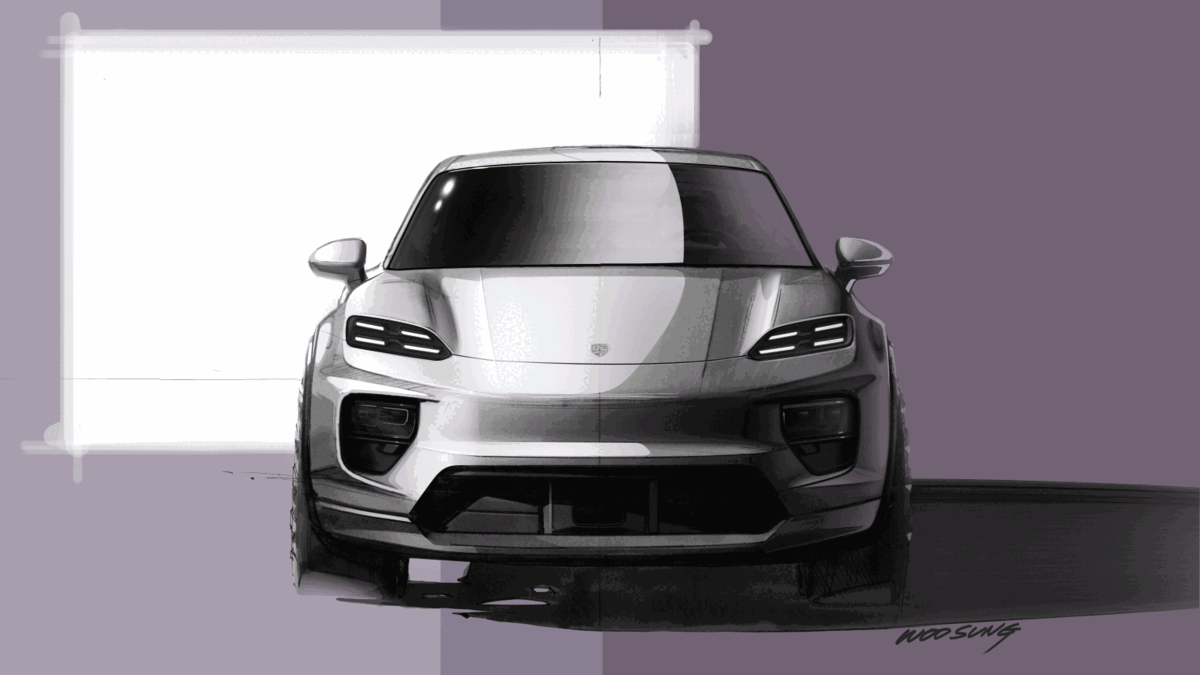Michael Mauer on “typical Porsche” and innovation in the design of the Porsche Macan
Now the time has come – Porsche is presenting its first electrification of an existing model with the new Macan, almost exactly ten years after its market launch. With their progressive, timeless design, typical brand performance, long-distance range and high everyday usability, the new Macan 4 and Macan Turbo are designed to fulfil all the requirements of an SUV. “We are taking the Macan to a whole new level – with exceptional e-performance, the new Driver Experience and expressive design,” said Oliver Blume, Chairman of the Executive Board of Porsche AG, at the world premiere in Singapore.
Shortly before the world premiere of the new Porsche Macan, Michael Mauer talks about the challenge of further developing the familiar design of the successful SUV. “The new Macan is the first model that we are electrifying from an existing, established product identity,” said the Head of Style Porsche. For him, “every new sports car must be clearly recognisable as part of the Porsche product family and the respective model, but must also be perceived as ‘the new one'”. This aesthetic consistency is very important for the Porsche brand. Finding exactly the right balance between “typically Porsche” and “innovative” is sometimes a difficult task, according to the designer.
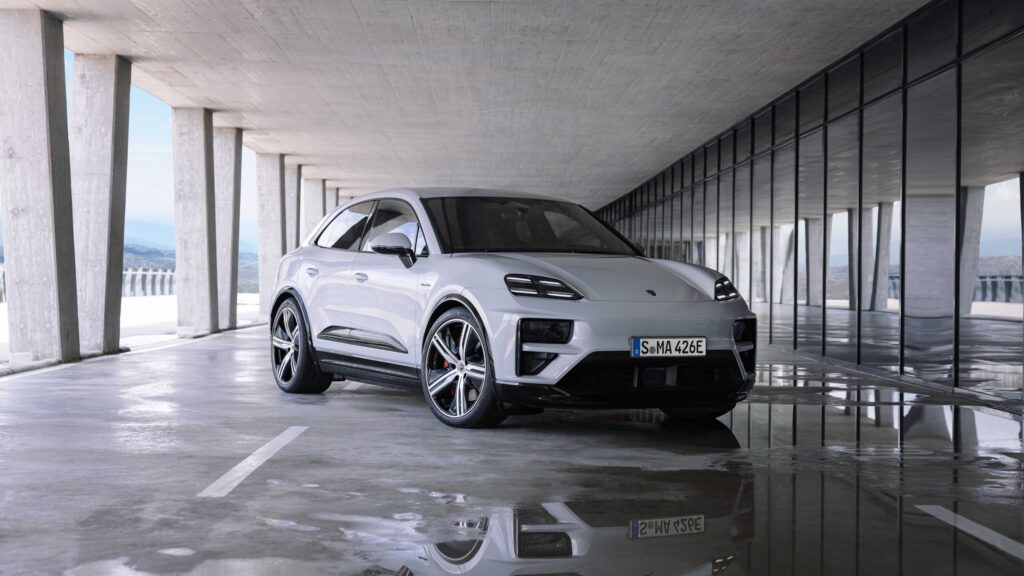

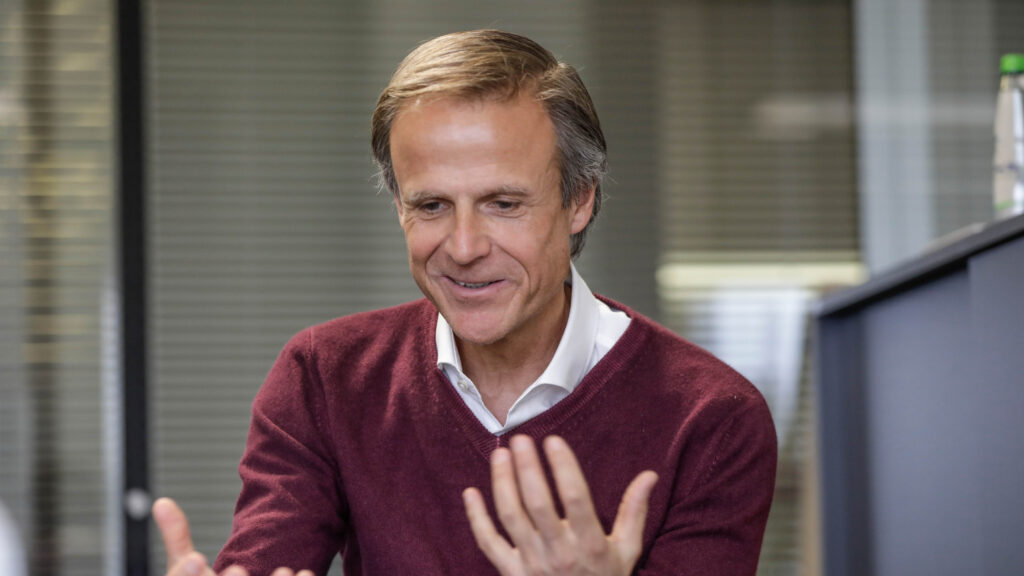

Mr Mauer, with the new Macan, Porsche is starting the new year with a very special highlight. As a designer, how do you approach the task of designing the first all-electric Macan?
Michael Mauer: Before we think specifically about the design, the strategic approach plays a decisive role in the design. What characterises the model? What do previous generations look like? That was a particularly exciting task with the new Macan. We presented the first Macan in 2013 and have been carefully but consistently developing the model ever since. Generally speaking, the Macan therefore already has an internationally established product identity. With each new generation, our task is to find the right balance between familiar design features and new elements. Specifically, each new sports car must be clearly recognisable as part of the Porsche product family and the respective model, but must also be perceived as “the new one”. This aesthetic consistency is extremely important for our brand. The new Macan is also the first model that we are electrifying from an existing, established product identity. So the question arises: how “new” must the “new” be – what is too much, what is just right?
How do you find the right balance? Which parameters can be used to recognise whether the model will be well received by customers?
Mauer: That is generally a difficult question – the design process takes place years before the market launch. There are no strictly rational parameters by which we can assess the attractiveness of a model in the future. At brand level, we have defined a kind of guideline with the Porsche Design Principles, which help us in our daily work on the models to align the design with our strategic goals. For the Porsche brand, we have chosen three key terms – Focus, Tension and Purpose – to describe the character of the brand. In somewhat simplified terms, you could say that these keywords describe what characterises a Porsche brand product – what makes it tangible for the customer as a “typical Porsche”.
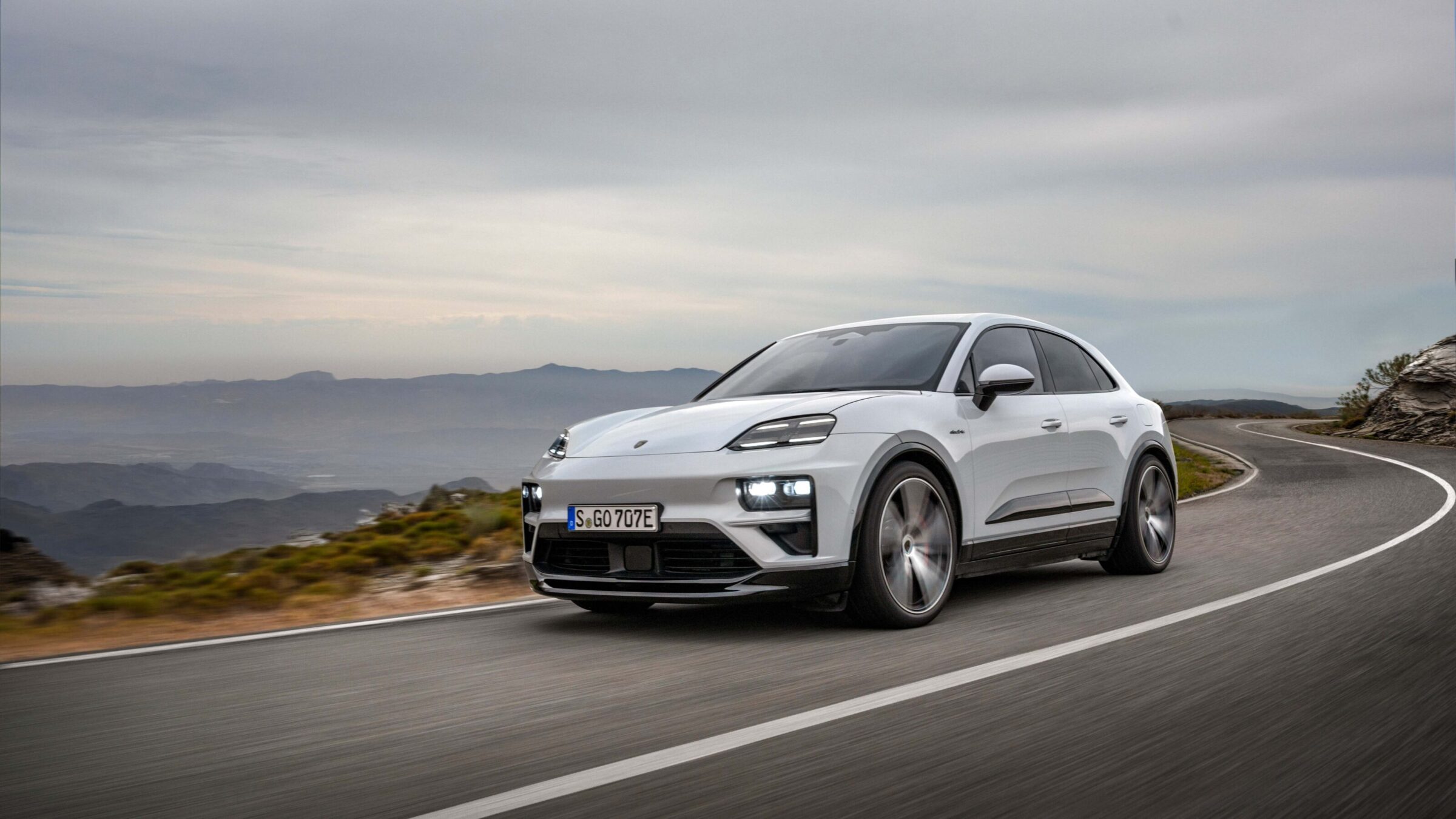

How did they come about? How are they applied in practice?
Mauer: To exaggerate somewhat, I would say that the creation or rather definition of the terms was almost more important than the terms themselves. The task of finding exactly three terms is far more complex than it sounds. Here, too, it is not possible without teamwork. The exchange of ideas and the associated discussion of the brand’s attributes was and is a very valuable task for the entire design team. On the one hand, the terms serve as a kind of compass to ensure that we do not lose sight of the essence of the brand when looking to the future. On the other hand, they help us decide which approaches to pursue in the early concept phase.
Can you give a concrete example of the realisation of a key concept?
Mauer: The “Focus” example explains it well. In terms of the interior, focus means that the driver is always at the centre of a Porsche sports car. In concrete terms, all the components that are important to the driver are arranged around him or her within direct reach. With the so-called Curved Display, we are going one step further: thanks to the free-floating display element in a slightly curved shape that is ideal for the driver, we are aligning this central instrument even more consistently with the driver. We have also created a kind of “minimal mode” in the instrument cluster. This allows the driver to select only those elements that are absolutely necessary for the journey. Focussing on what is absolutely necessary, so to speak.
To what extent do different international preferences and trends play a role in the design process?
Mauer: In general, I believe that the right balance is crucial for a well-established brand like Porsche. A brand with a distinctive identity also thrives on not following every trend. Sometimes it is a better strategy not to always be the first with all topics. It’s about scrutinising trends and influences and critically examining whether they suit the brand. This is the only way we can secure our unique identity in the long term. This also applies when looking at the markets. One example: In Asia, digital elements play a very important role in cars – design is generally more playful from a European perspective. What does that mean for Porsche? The consequence is that we are looking very closely at these needs. Nevertheless, I am convinced that Porsche is so popular worldwide precisely because of its clear brand DNA with a long history and what I call a “consistent CV”.
Finding exactly the right balance between “typical Porsche” and “innovative” is sometimes a difficult task.


Is there a risk of being perceived as old-fashioned and outdated at some point?
Mauer: Definitely! Finding exactly the right balance between “typical Porsche” and “innovative” is sometimes a difficult task. We also take this challenge into account structurally. The design of a vehicle never comes entirely from the pen of a single designer. Design is teamwork and thrives on the exchange of different ideas. At Porsche, we have deliberately created the creative freedom to think about future approaches and characteristics of individual design elements, far removed from work on specific models. In this way, we ensure that creative ideas can emerge independently of the series production process. It is not uncommon for these to actually flow into series vehicles later on. Another important aspect is the composition of the team. We deliberately combine very experienced designers with the “young and wild” – this exchange usually results in super exciting approaches. We employ around 200 designers in total.
What influence do the new technical components have on the design process? Mauer: Basically, the technical requirements of the car are always crucial. This starts at a very early stage with the packaging – i.e. the arrangement of various components in the car. The packaging is decisive for the basic proportions – the typical Porsche flyline would not be realisable with every arrangement. The electric drive offers new degrees of freedom and challenges at the same time: the elimination of the massive engine block allows us to emphasise the typical topography on the front bonnet. At the same time, the battery, which is still quite massive, requires a lot of space and would potentially disrupt the characterising width-to-height ratio. Of course, aerodynamics also play a major role in terms of the range of an electric sports car. In principle, however, this is not a completely unknown situation for us: in addition to a new form of drive, we are constantly confronted with requirements that influence our design. Examples include increased crash requirements or restrictions with regard to the approvability of individual elements such as the design of the front and rear lights.


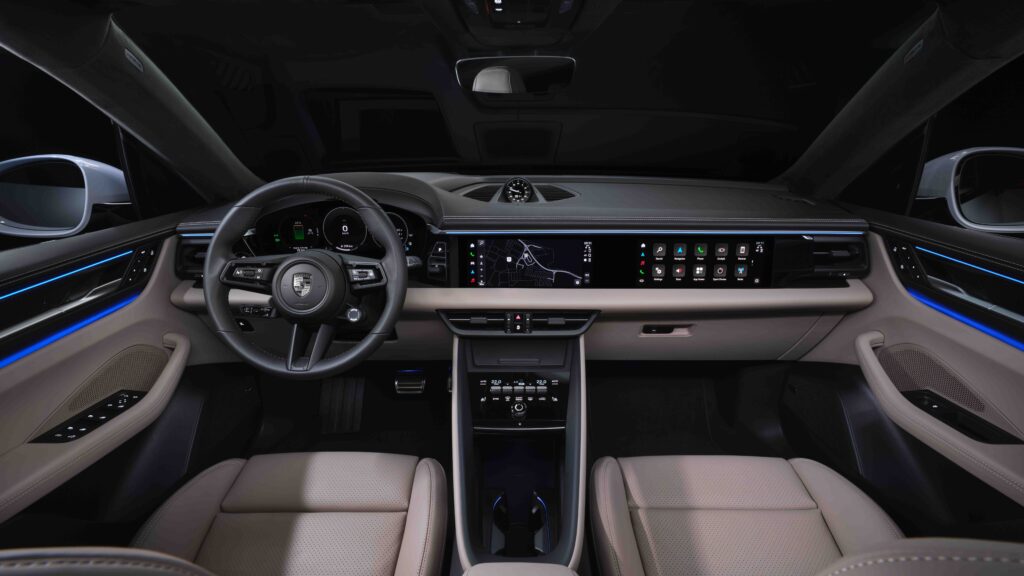



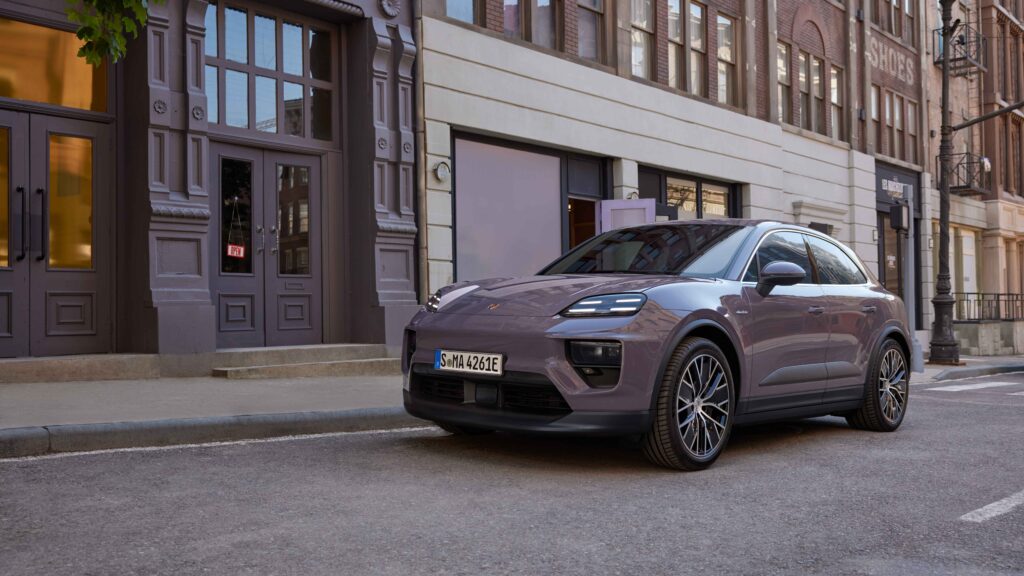

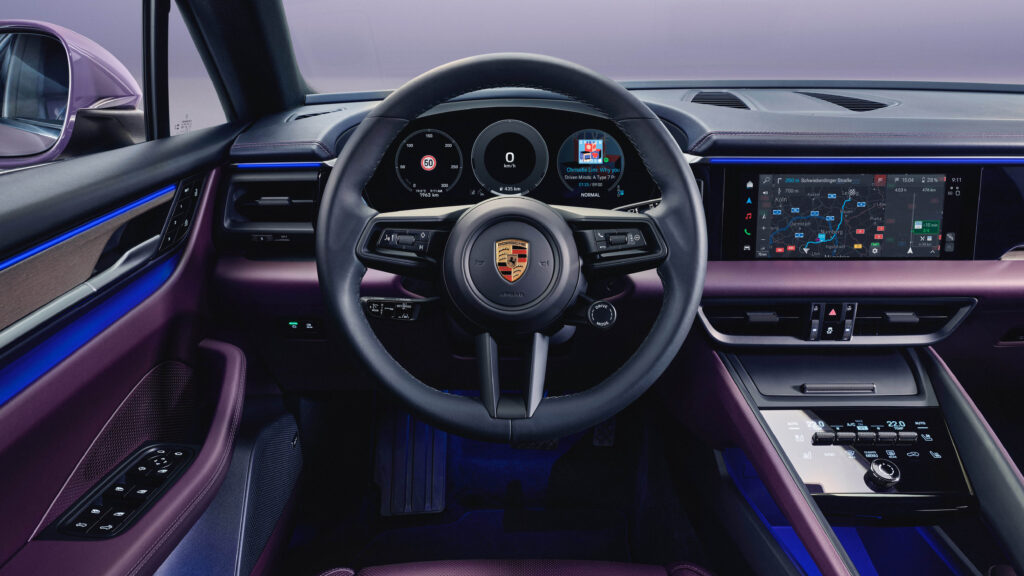



Specifically in relation to the new, all-electric Macan: How important is the visualisation of the electric drive in the design? Mauer: In general, we at Porsche have decided not to completely differentiate the electric models from the combustion-powered sports cars in terms of design. Porsche remains Porsche – even an electric Porsche is the sports car in the segment. With this in mind, it is logical that we do not abandon our established Porsche design DNA. Without giving away too many details: The new, electric Macan is also clearly recognisable as a Porsche and as a Macan at first glance. I would say that we have fundamentally retained the proportions that define the sports car in this segment for Porsche. The design of both the interior and exterior has been further honed – the new model looks even sportier and more dynamic. The driving pleasure is definitely reflected in the design.
Text&Photos: Porsche

